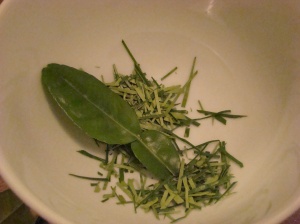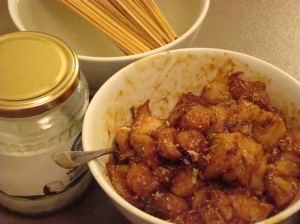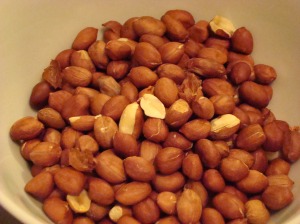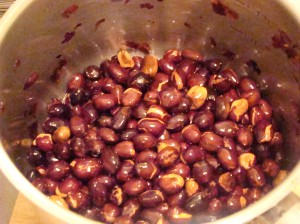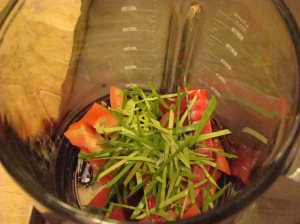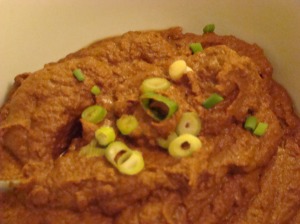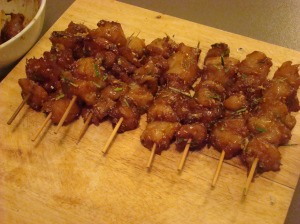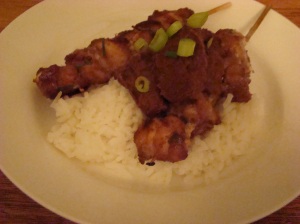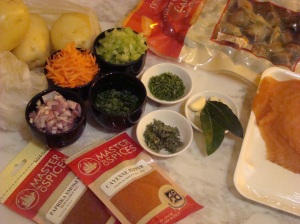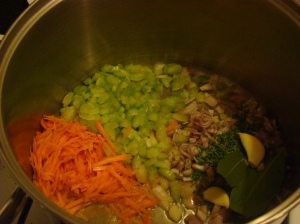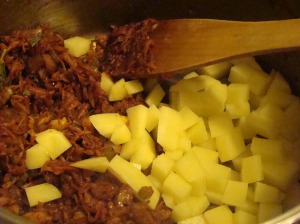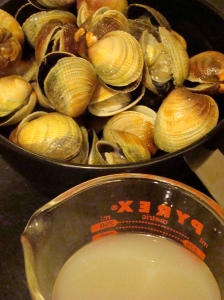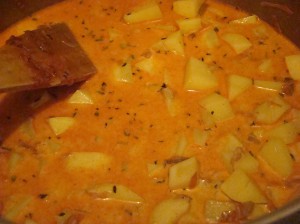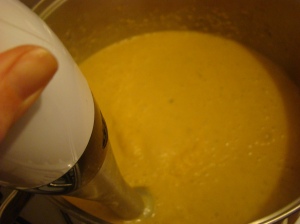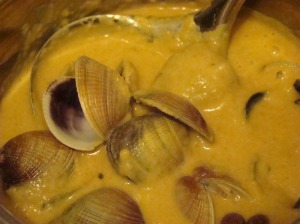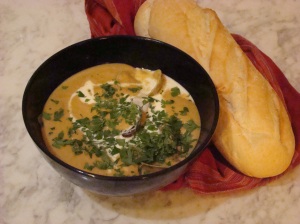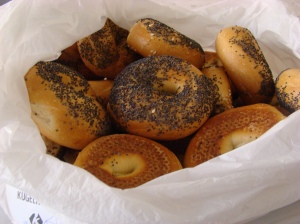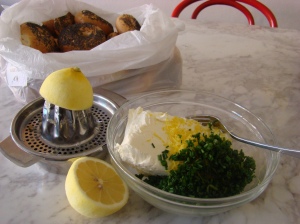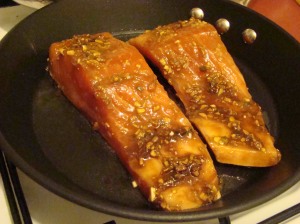It is a long weekend in Sydney. The October long weekend is when daylight savings time kicks in, and the weekend that heralds the start of summertime. A lot of Sydneysiders use the opportunity to make a pilgrimage out of the city and head up the coast. Staying at a friend’s place for the weekend, and the start of BBQ season is the inspiration for this recipe, Marinated Fish skewers with Satay Sauce.
I used Monkfish for my skewers, as recommended by my fish monger. You could use chicken, tofu or prawns instead of fish if you prefer. Kecap manis is a thick, Indonesian soy sauce, normally found in the Asian section of your supermarket. Kaffir lime leaves add a citrus tang. You can add chilli to taste to the sauce – I like things spicy so added more to make sure there was a bit of heat to the sauce. This is not an authentic Indonesian or Balinese recipe, because I have added ginger to the marinade and sauce, but I think the flavours work well together.
It was hard to get an appetising photograph of the satay sauce, but I assure you it tastes delicious and quite different to anything you buy from the supermarket out of a jar or bottle.
Serve your skewers with the satay sauce as a snack on their own, or with rice, salad or vegetables for a more substantial meal.
What I was cooking this time last year: Guacamole
Marinated Fish Skewers with Satay Sauce
Serves 4
Ingredients:
Fish Skewers
- 1kg monkfish fillets
- 5 cloves of garlic, crushed or finely chopped
- 2 heaped teaspoon grated ginger
- 5 kaffir lime leaves, shredded finely
- 4 tablespoons coconut oil
- 4 tablespoons kecap manis (sweet soy sauce)
- wooden skewers
Satay Sauce
- 150g raw unsalted peanuts
- 4 cloves of garlic, crushed or finely chopped
- 1 teaspoon grated ginger
- 2 tablespoons coconut oil
- 1 large tomato
- 2 tablespoons kecap manis (sweet soy sauce)
- 2 red chillies, or to taste
- 4 kaffir lime leaves, finely shredded
- 1/4 – 1/2 cup warm water
Method
- Soak the wooden skewers in water. This prevents them burning when they are being cooked.
- Add the shredded kaffir lime leaves, garlic, ginger, oil and kecap manis to a bowl.
- Chop the fish into cubes and add to the bowl.
- Toss to coat the fish in the marinade, set aside to soak up the flavours while you prepare the satay sauce.
- Heat the coconut oil in a saucepan and add the raw peanuts.
- Cook the peanuts, stirring regularly, until lightly golden brown. Set aside to cool. (The peanuts will continue to cook once they are removed from the heat so don’t allow them to get too golden brown when they are on the heat.)
- Add the garlic, ginger, chillies, tomato, kecap manis kaffir lime leaves and peanuts to a blender jug. Add 1/4 cup of warm water.
- Blend the sauce until smooth and combined. Taste, if required add more chilli or water until you are happy with the heat and thickness of the sauce.
- Transfer your satay sauce to a bowl and set aside.
- Thread the cubes of marinated fish onto the soaked skewers.
- On the BBQ or a medium-hot frying pan, cook your fish skewers for a couple of minutes on one side.
- Turn and cook for a minute or two on the other side, or until cooked through.
- Serve the cooked fish skewers alongside the satay sauce. Enjoy.
What is your favourite BBQ recipe? Has this post inspired any new ideas?

